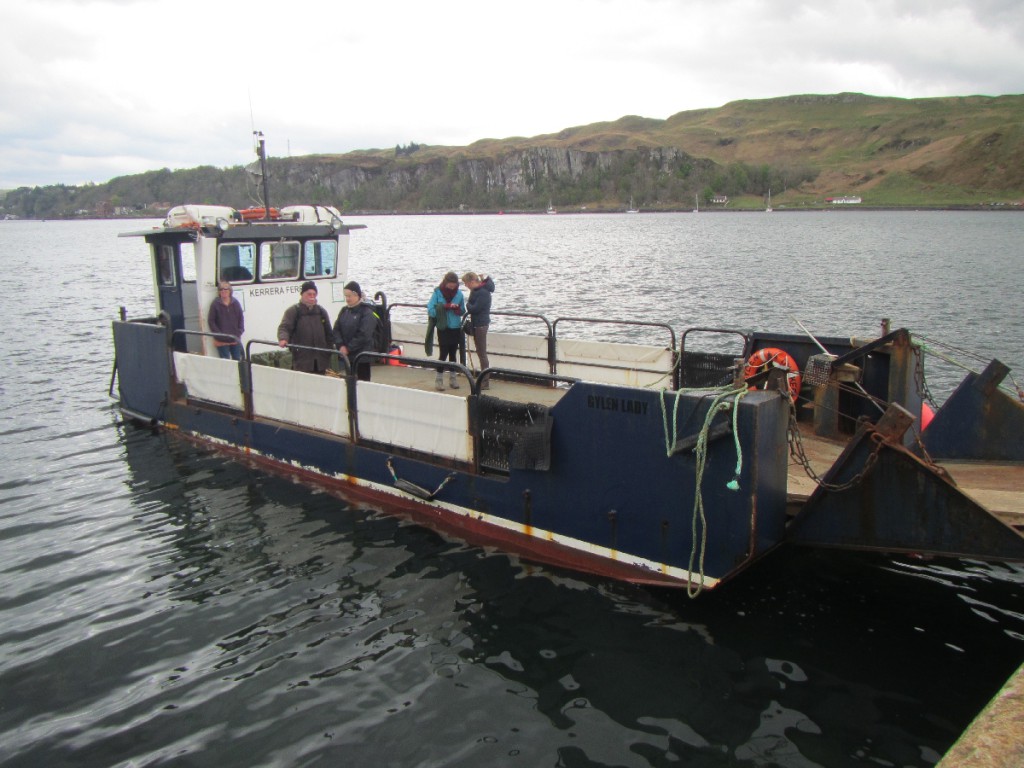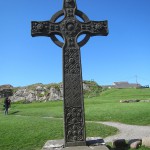
While preparing the boat to go back in the water we stayed in the Heron Chalet at Ardoran Marine. They have three very comfortable chalets, all with wonderful views of Loch Feochan, so once Charmary is back in the water we can keep a direct eye on her day (and night!). Though much of the time has been spent getting the boat ready, we have also had a chance to get out and about round Oban a bit as well.
Monday 22nd April
This afternoon, on a recommendation from the Oban tourist office, we went up to Barcaldine and went for a walk in Sutherland’s Grove – a Forestry Commission woodland. We did a three mile circuit that took us through the beautiful gorge, up to the lake and then back down through the woods – a lovely and varied circuit.
Wednesday 23rd April
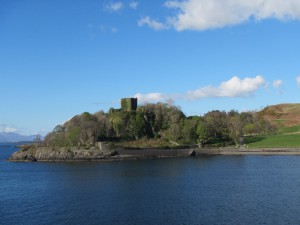
Having put all the sails on the boat in the morning, this afternoon we went for a walk to the north of Oban to Dunollie Castle. The castle is a ruin and dates from around the 15th century, though there was thought to be a castle on the site as early as the 13th century. It was built originally by the MacDougall clan and though they lost it after fighting Robert the Bruce, it was returned to them in 1661. By 1746 though, it seemed they were fed up with living in a castle and they abandoned it and built Dunollie House further down the hill.
On the woodland walk through to the castle is a large rock called the ‘Dog Rock’. It is apparently so-called because the giant Finn the Fingal of MacPherson used to tie his legendary dog Bran to the stone. The grooves in the bottom of the stone are where the dog wore them tugging to try to get free.
Thursday 24th April
Today we decided to take a full day out and go to Mull and Iona. To get there we had to take the 09.50 ferry from Oban to Craignure arriving around 10.35am. Then it was around a one hour drive all the way west across Mull to Fionnphort and then another shorter (10 minute) ferry across to Iona. In April 2008 Fionnphort changed forever as the first cash machine arrived in the village. Until the ATM arrived the villagers had to endure a half-day trip to Tobermory to get their cash. As the village postmaster put it, they now have the cash machine with the best view in the world:
“As you stand at the ATM, you have a view of Iona to the west, Coll to the north and looking east you can see the island’s only Munro, Ben More.”
Iona is said to be a crucial site for the Christian faith and the monastery on the island was founded in 563 by St. Columba. The island very quickly became a monastic centre founding various satellite institutions. It became a renowned centre of learning and is said to be the burial place of around 48 Scottish kings including Macbeth. Recent academic work has cast some doubt on this claim, but there is no doubt that the graveyard (the Rèilig Odhrain) is a crucial site with many important people including Norse kings buried there.
Iona Abbey, now an ecumenical church, is one of the best-preserved ecclesiastical buildings surviving from the Middle Ages in the Western Isles of Scotland.
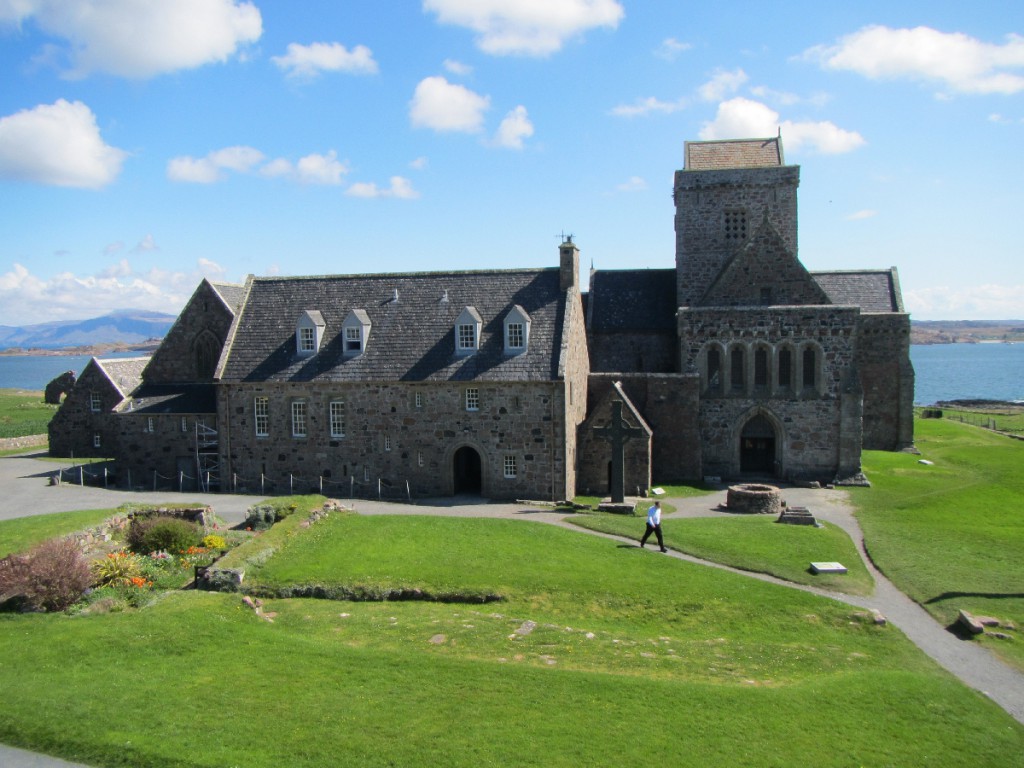
Friday 25th April
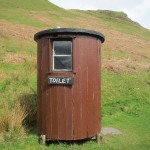
Today we decided to stay a little closer to home and did a circular walk round the southern half of the island of Kerrera. We started by catching the Kerrera ferry from the mainland across to the island and from the ferry slipway headed immediately south towards Gylen Castle. The walk went along tracks used by residents who mostly seemed to have dodgy old 4WDs for obvious reasons! The walk to Gylen takes around an hour from the ferry slipway and just before the track down to the castle is the Kerrera tea room bunkhouse. After an excellent tea/coffee with a scone/lemon drizzle cake and takeaway sandwiches for lunch, we carried on down to the castle and then on round the western side of the island.
Gylen Castle is in a magnificent setting on the southern tip of Kerrera. It was built in 1582 by the Clan MacDougall but was only occupied until 1647 when it was ransacked and burned by the Covenanters under General Leslie during the Wars of the Three Kingdoms. It has remained unoccupied ever since, but was restored considerably with funds raised from Historic Scotland and also from the Clan MacDougall around the world. It was officially re-opened by Clan Chief Morag MacDougall of MacDougall in 2006.
One feature of the castle that was restored was the Oriel window. This is a kind of bay window, but this one had a more sinister purpose as it also had a removable floor. This enabled the occupants to drop objects or vats of boiling water (or other liquids …) on any attackers.
We didn’t walk round the northern part of the island, but the marina area at Ardantrive has an interesting history as a flying boat base during World War II.
